
What artists are doing now. Arturs Virtmanis in Jersey City
An inspiration and mutual solidarity project for the creative industries
In the current situation, clearly our top priority is to take care of our families, friends and fellow citizens. Nevertheless, while public life is paralyzed and museums, galleries and cultural institutions are closed, in many of us neither the urge to work nor the creative spark have disappeared. In fact, quite the opposite is happening in what is turning out to be a time that befits self-reflection and the generation of new ideas for the future. Although we are at home and self-isolating, we all – artists, creatives and Arterritory.com – continue to work, think and feel. As a sort of gesture of inspiration and ‘remote’ mutual solidarity, we have launched the project titled What Artists Are Doing Now, with the aim of showing and affirming that neither life nor creative energy are coming to a stop during this crisis. We have invited artists from all over the world to send us a short video or photo story illustrating what they are doing, what they are thinking, and how they are feeling during this time of crisis and self-isolation. All artist stories will be published on Arterritory.com and on our Instagram and Facebook accounts. We at Arterritory.com are convinced that creativity and positive emotions are good for the immune system and just might help us better navigate through these difficult times.
From his studio in Jersey City, artist Arturs Virtmanis answers a short questionnaire by Arterritory.com and let's us take a look at his workshop:
Are you working on any projects right now in your studio? If so, could you briefly describe them?
Well... right now I am frantically dismantling and shutting down my studio in Jersey City. And it does feel like an epic event. not just because there is the pandemic, but on a very personal level - it has been my main workspace for the last 15 years, and the accumulation of certain density here is immense in both - in terms of energy and material accumulation... Mountains of research models and sketches, artefacts and materials... some of it well forgotten by now... its a form of archaeology and self (re)discovery. But like most things that happen behind the closed doors of an artist studio, this is a very hermetic process, an intense internal drama with, eventually, only dust left behind... But besides this, there are projects ahead that need to be dealt with, the biggest of them a large site-specific installation/solo show at the National Museum in Riga that’s scheduled to open in November. The idea for the show is to utilize the unique and complex space of the ex attic of the museum and create an immersive otherworldly environment. And by “otherworldly” I mean that “on the other side of the river of life”. The working title for the show is “Psychopomp’s Adventures in a Soulless Land”. In addition, I am actively planning to expand my installations into the fields of live art and performance and there are projects in process.
What is your recipe for survival in a time of almost only bad news?
I guess its the presence of an intense internal creative process, which positions one as a main event against the ever-changing “backdrop” of events and all kinds of good/bad news. My work often deals with entropy and fragility of this world, and so these current events give it a very meaningful context. I am aware that this might sound like a somewhat cynical or high brow position but I want to reaffirm my internal commitment towards humanity... except I don’t know what else to really do in this context of events...
What is something that we all (each of us, personally) could do to make the world a better place when this disaster comes to an end? It is clear that the world will no longer be the same again, but at the same time...there is a kind of magic in every new beginning.
I think we all know that a crisis can be a powerful trigger for a change for better... but human nature doesn’t change, and eventually we will settle back into business as usual mode, except that some social, political and business structures will change and hopefully towards better... But I am also aware that a lot of bad shit has been done in the name of improvement of the world. In general, I am strongly inclined to believe that we each should start with ourselves and then this transformative energy will project outwards. But if to bluntly sum this up - I am not quite sure what exactly I should be doing ...
The art world and the culture sector is one of the most affected. What is the main lesson the art world should learn from all this?
That is nothing new of course, this vulnerability of the art world is exposed every time there is some large scale calamity. Although I am not sure what is happening right now with the art market, maybe it's the last safe heaven for investors but I can speak for artists, and I know that many of us exist in the zone of high economic vulnerability, or reframing it - artists often spend their lives in a permanent state of catastrophe, be it financial (external) or creative (internal) and therefore they are well adapted to deal and even thrive in such situations. The main lesson (for me) is - be brave, be stubborn and manifest unapologetically. The time is always now. And let's not forget that art can serve society at large in ways that are often difficult to gauge using economic criteria... Depending on a situation and personal tendencies art can serve as a psychological safety net or a tool for transcendence and growth even in the most difficult circumstances.
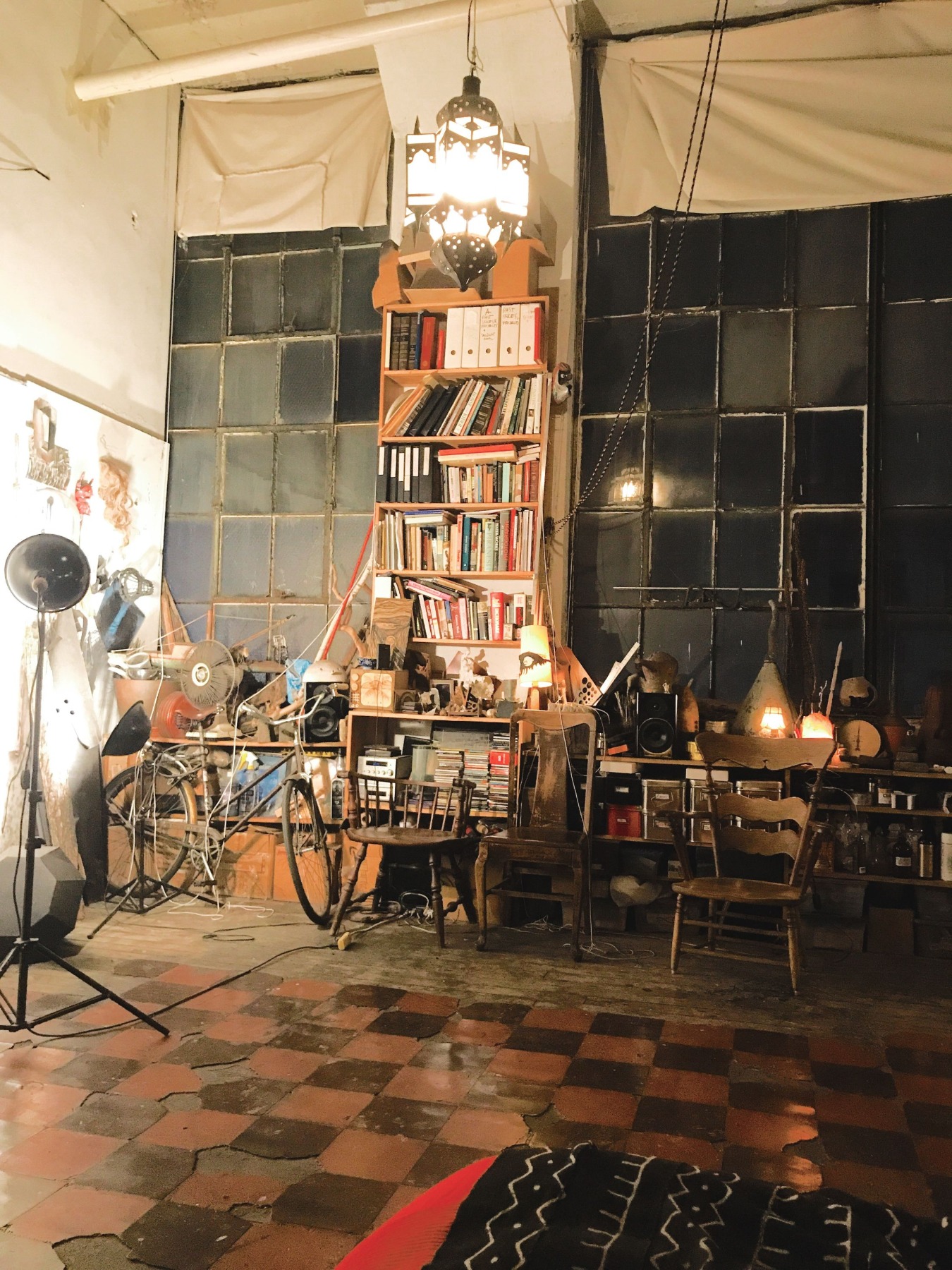

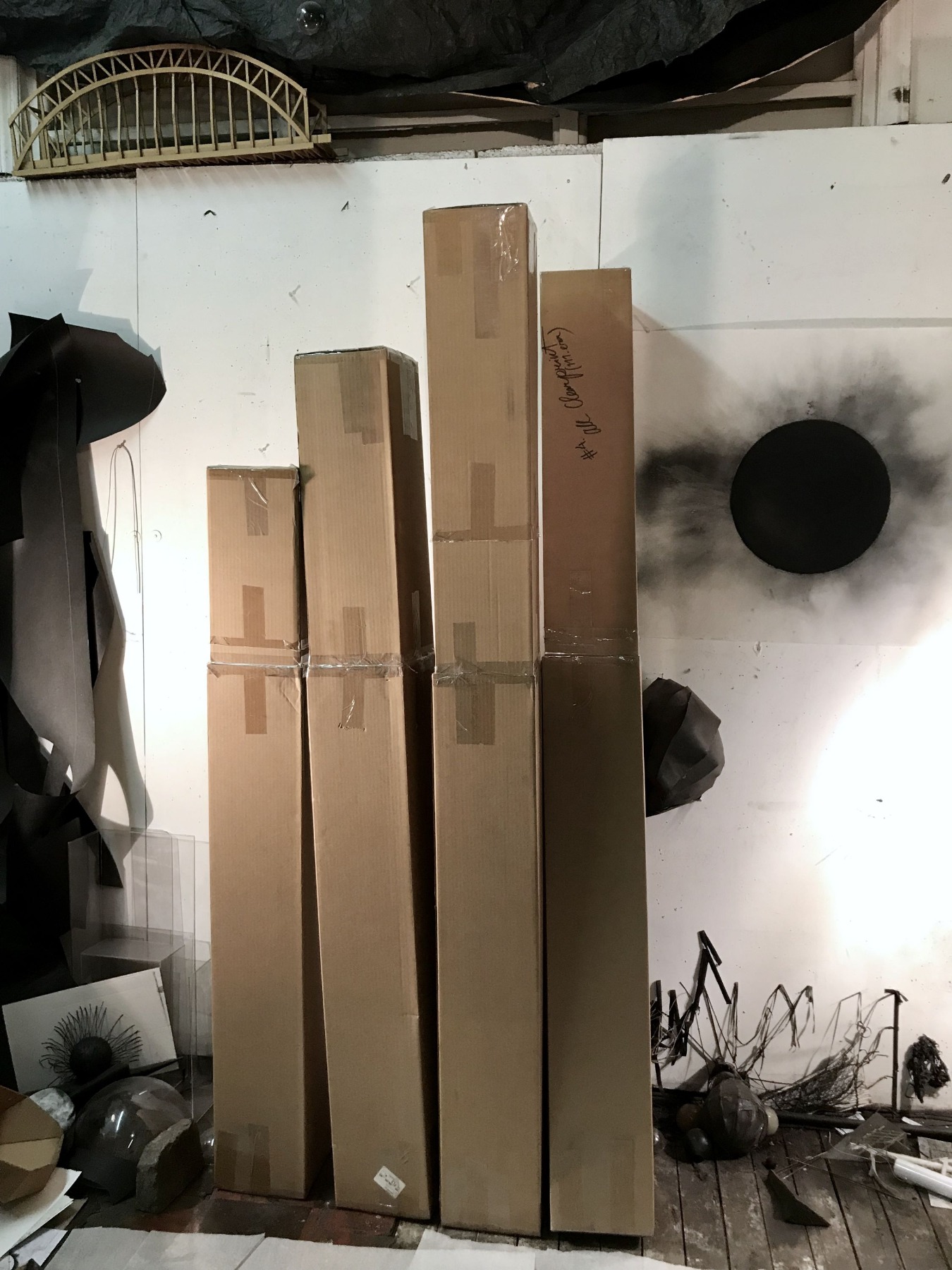
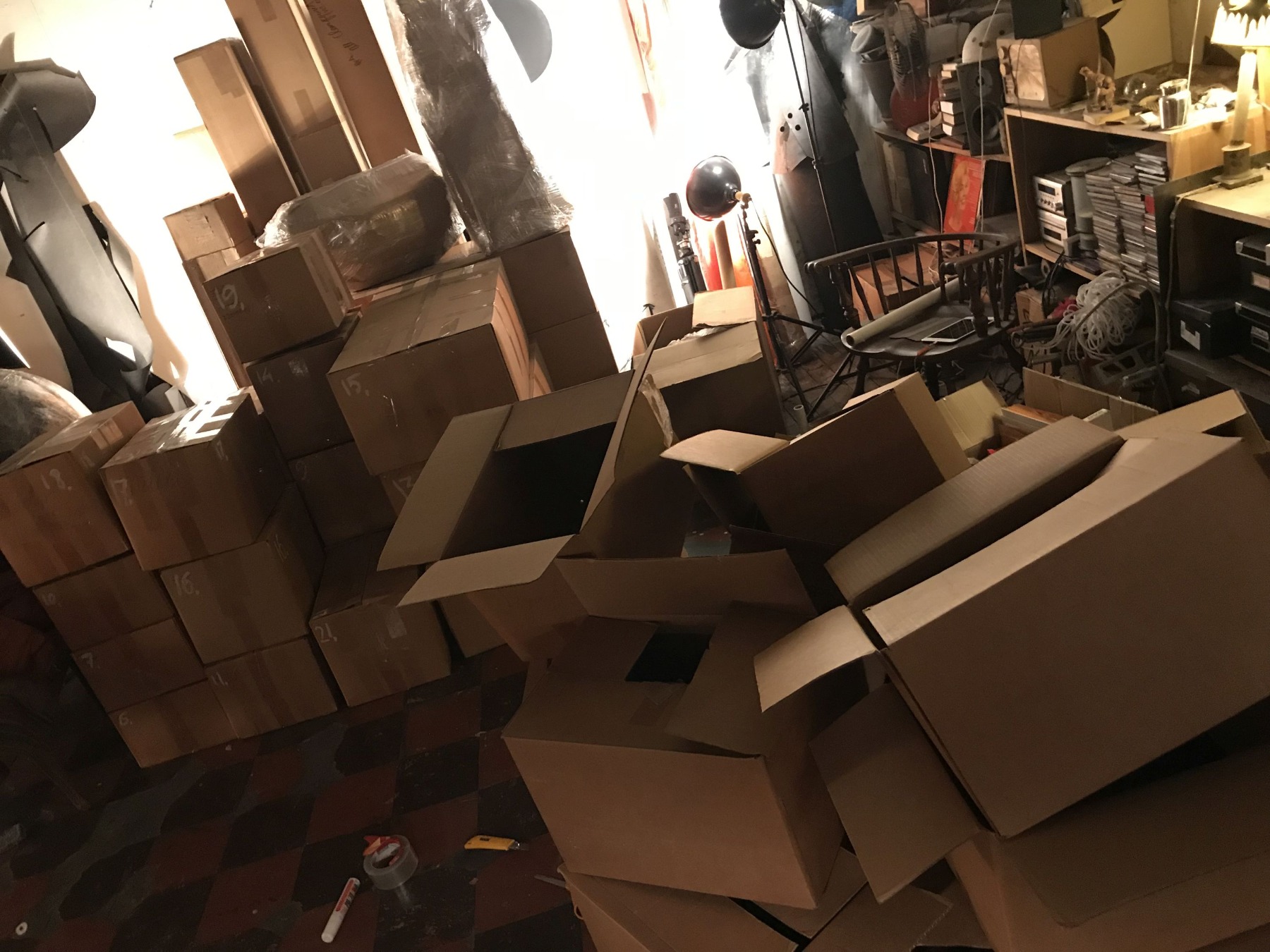

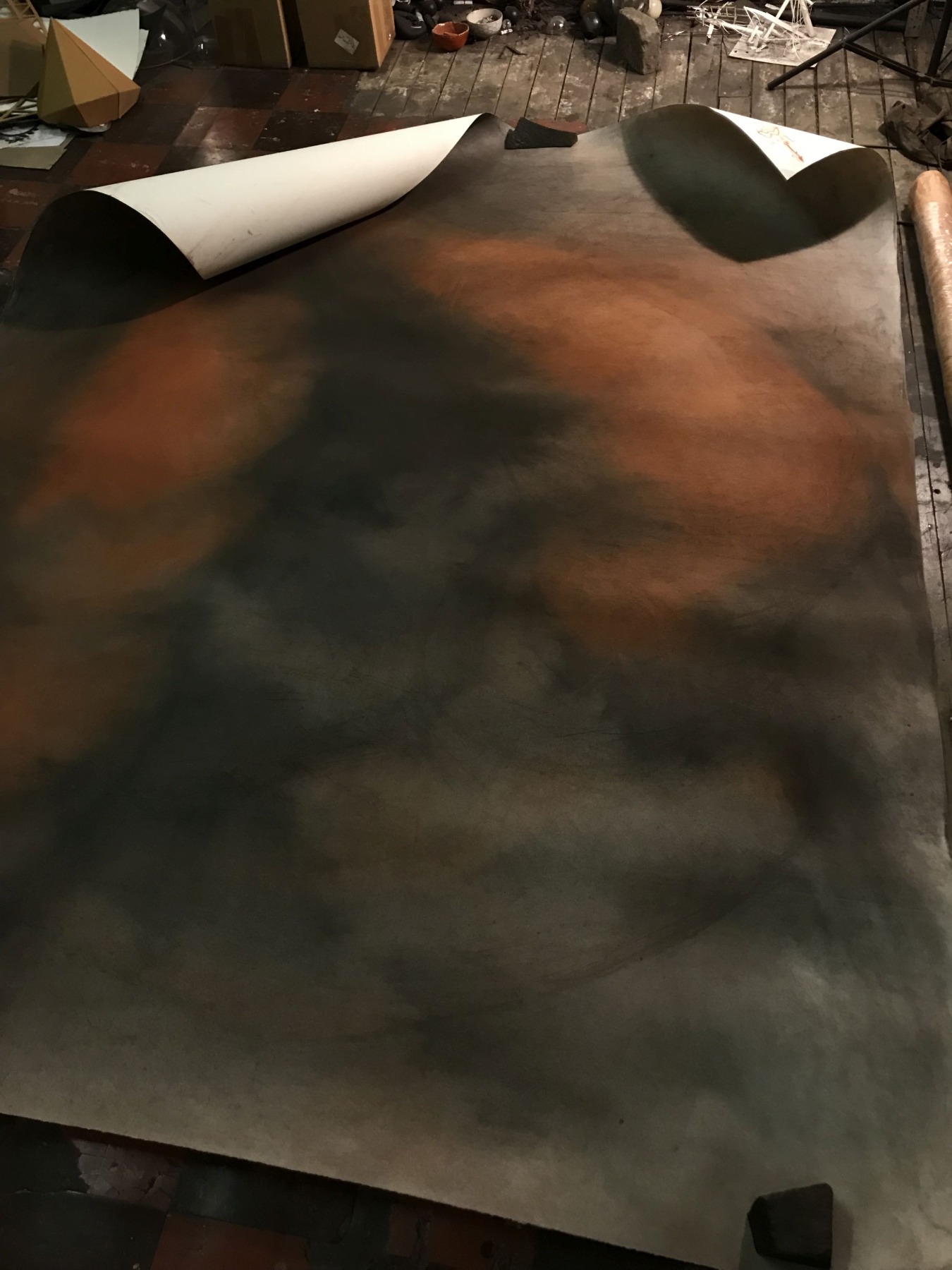
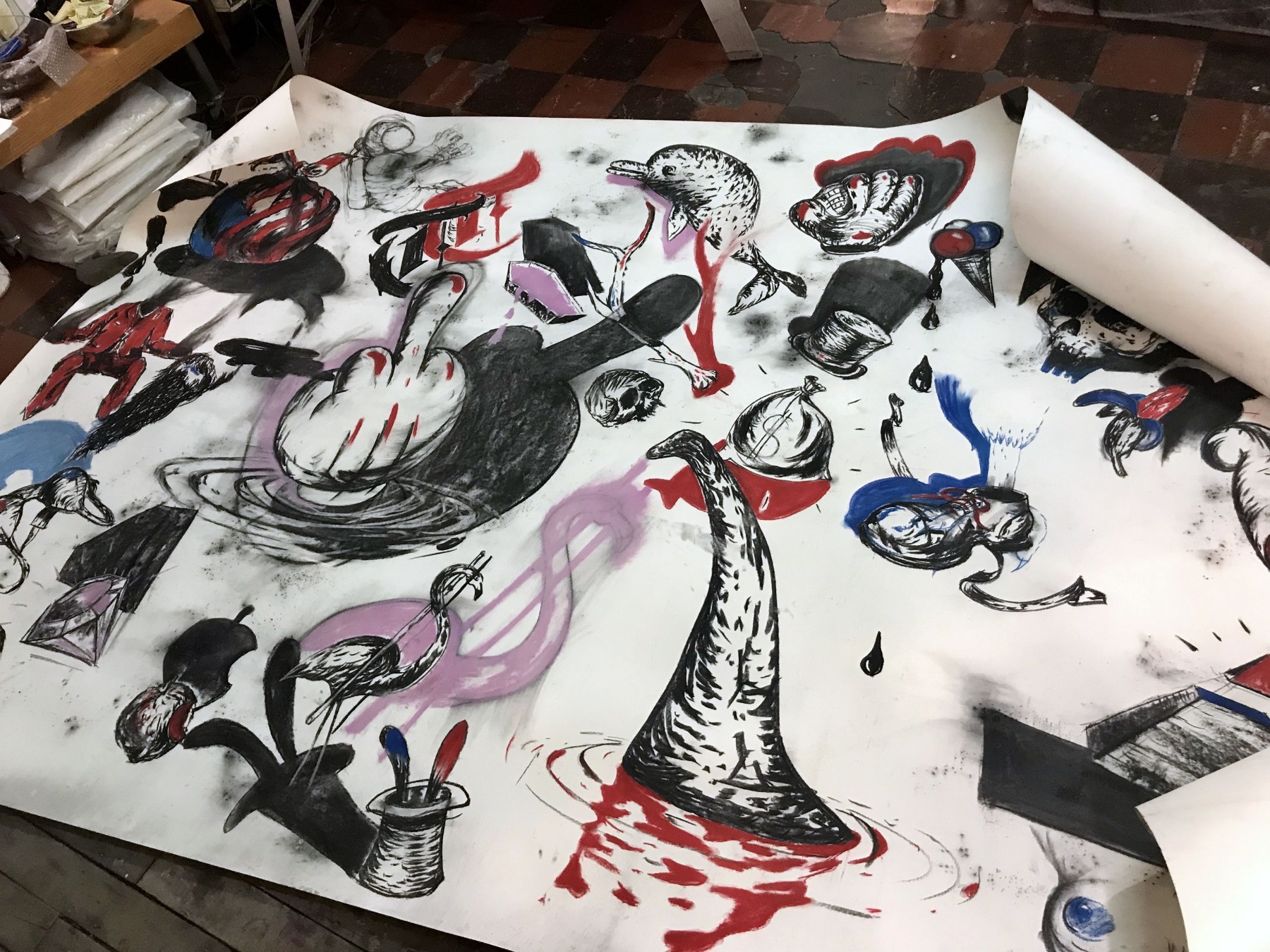
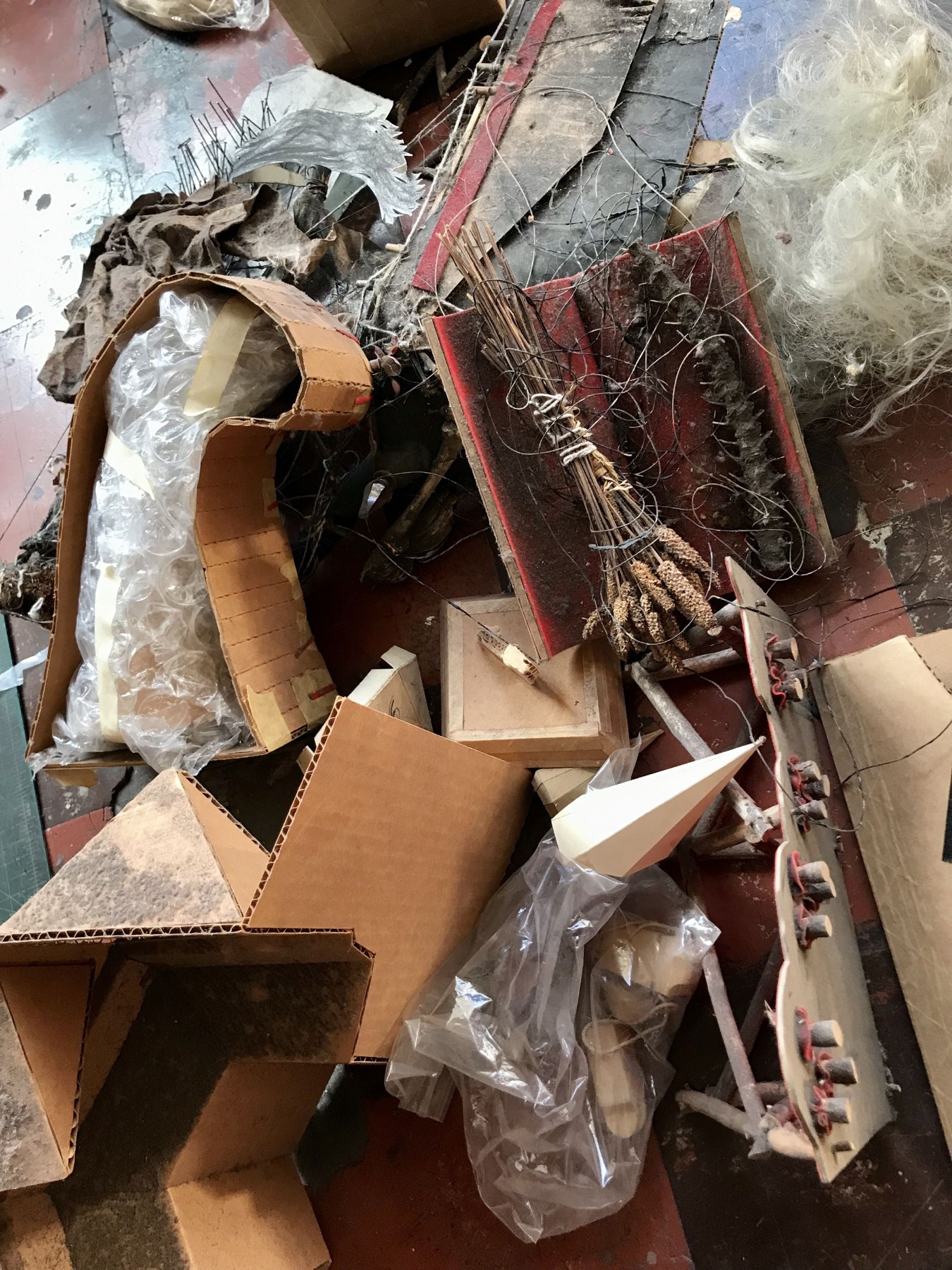
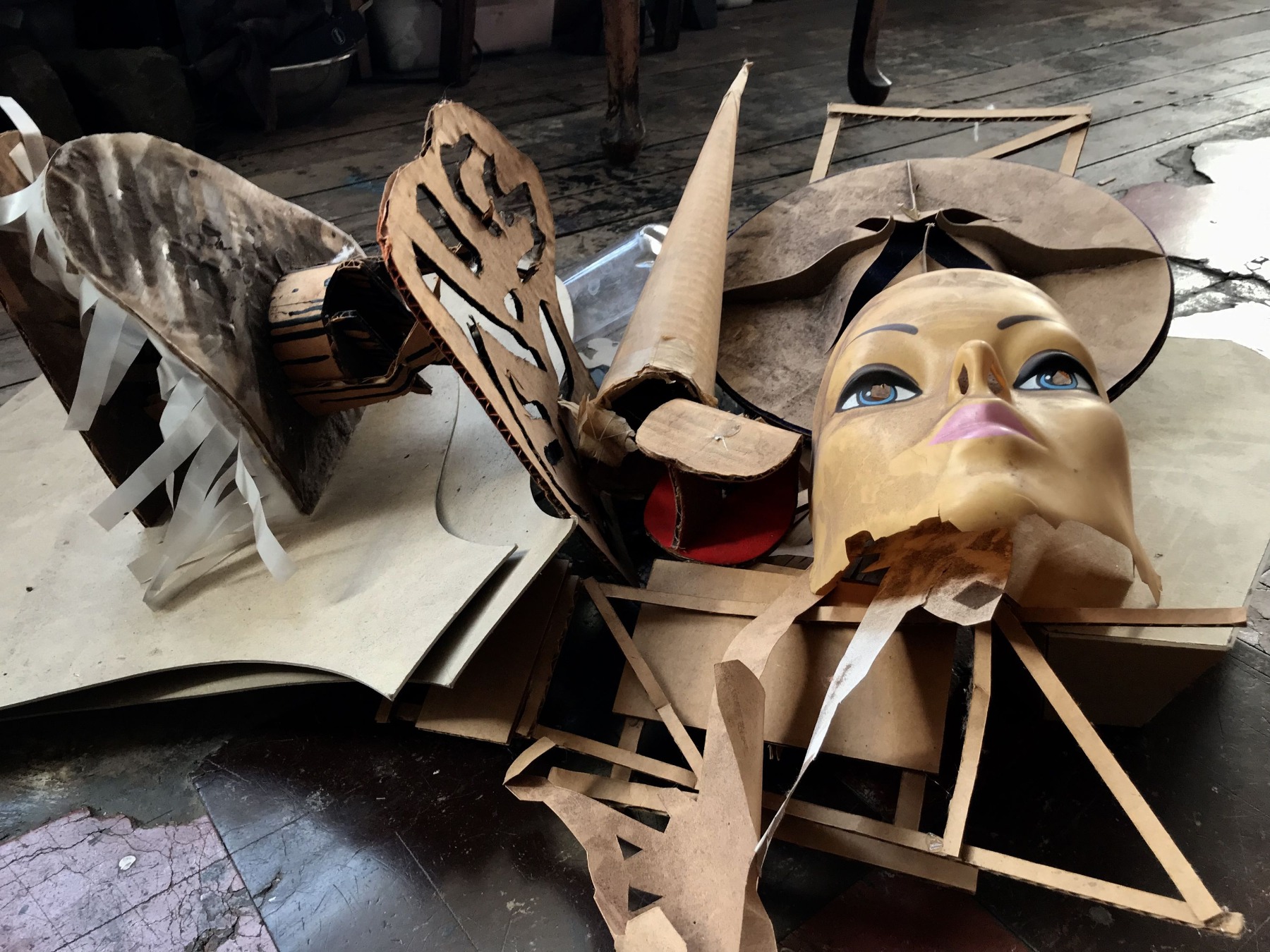

***
Arturs Virtmanis is a New York based artist and designer born in Riga, Latvia. Working as an installation artist, set designer and art director with educational background in sculpture,
graphic arts and design. He creates visually and metaphorically dense provisional drawing environments that combine relics of sentimental imagery of past eras, cryptic texts in the form of obsessive, undecipherable calligraphy, collections of found and drawn objects a la cabinet of curiosities, mechanized objects, theatrical lighting, architectural scale models and residue that's accumulated in the process of creation of works. The material of choice is charcoal — used obsessively, often to the point of deep and vaporous blackness. Exploring such themes as entropy, melancholy and messianism these “sets” draw upon obscure and sometimes fictional histories of humanities.